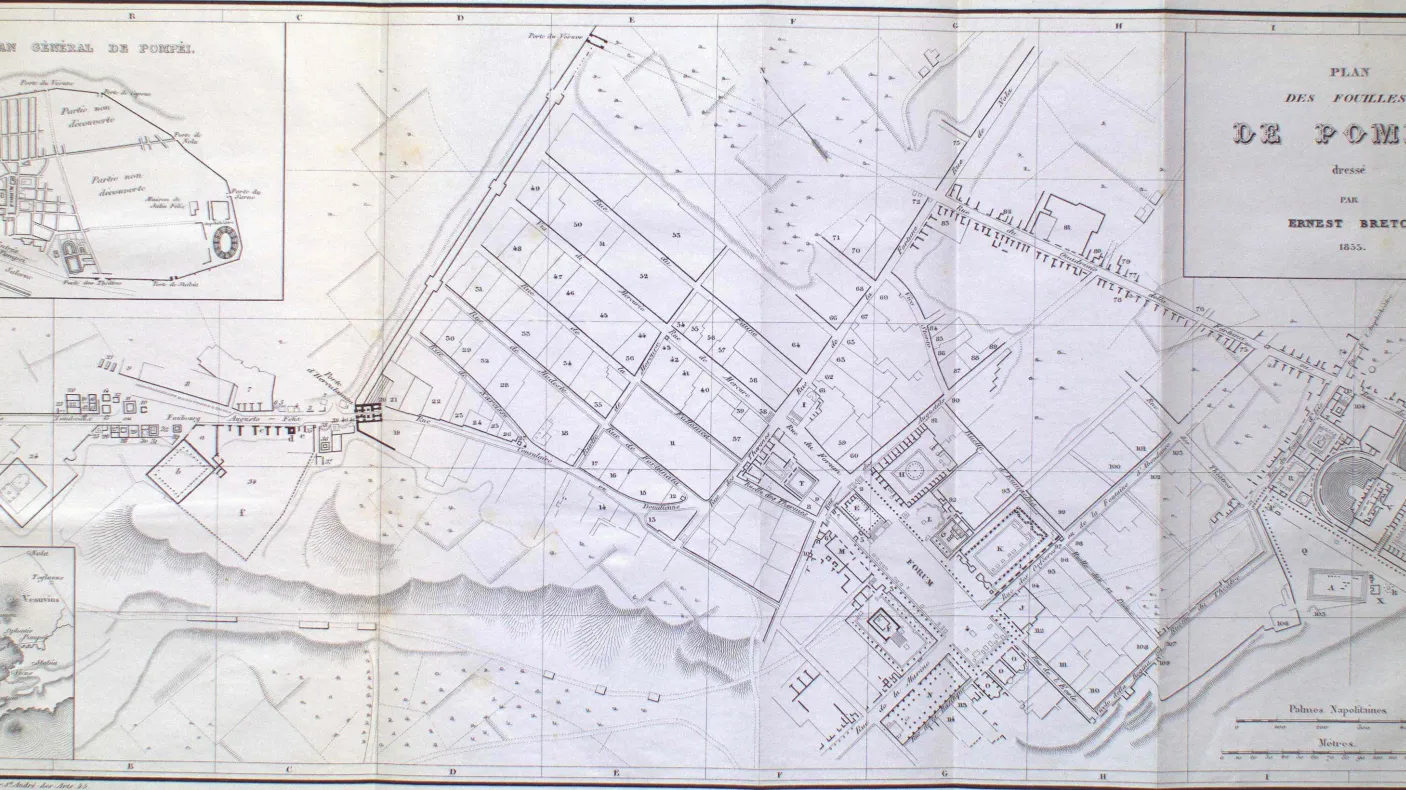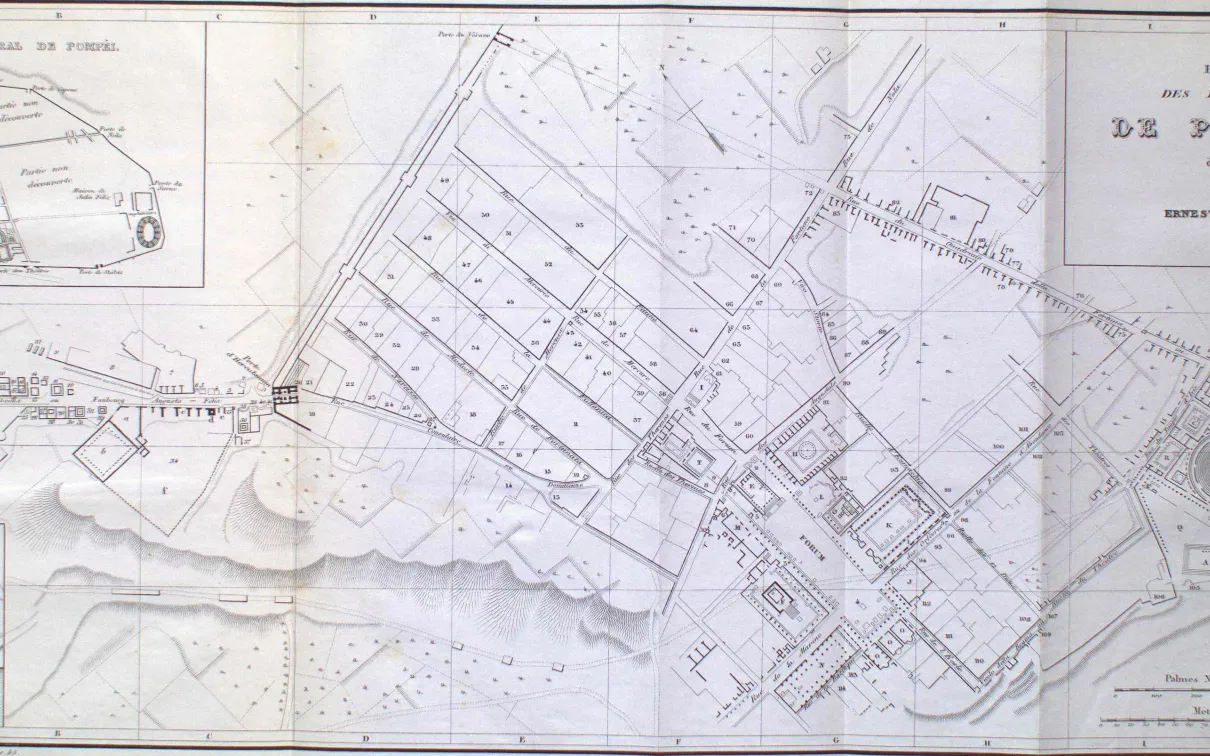In the Shadow of the Volcano: The Discovery of Pompeii
Published
Categories
Blog Post
In 79 CE Mount Vesuvius erupted violently. Pliny the Younger, in his eye-witness account of the event, describes earthquakes, towering plumes of hot ash, and skies filled with fire. The heat, ash and debris killed thousands and buried the Roman city of Pompeii.
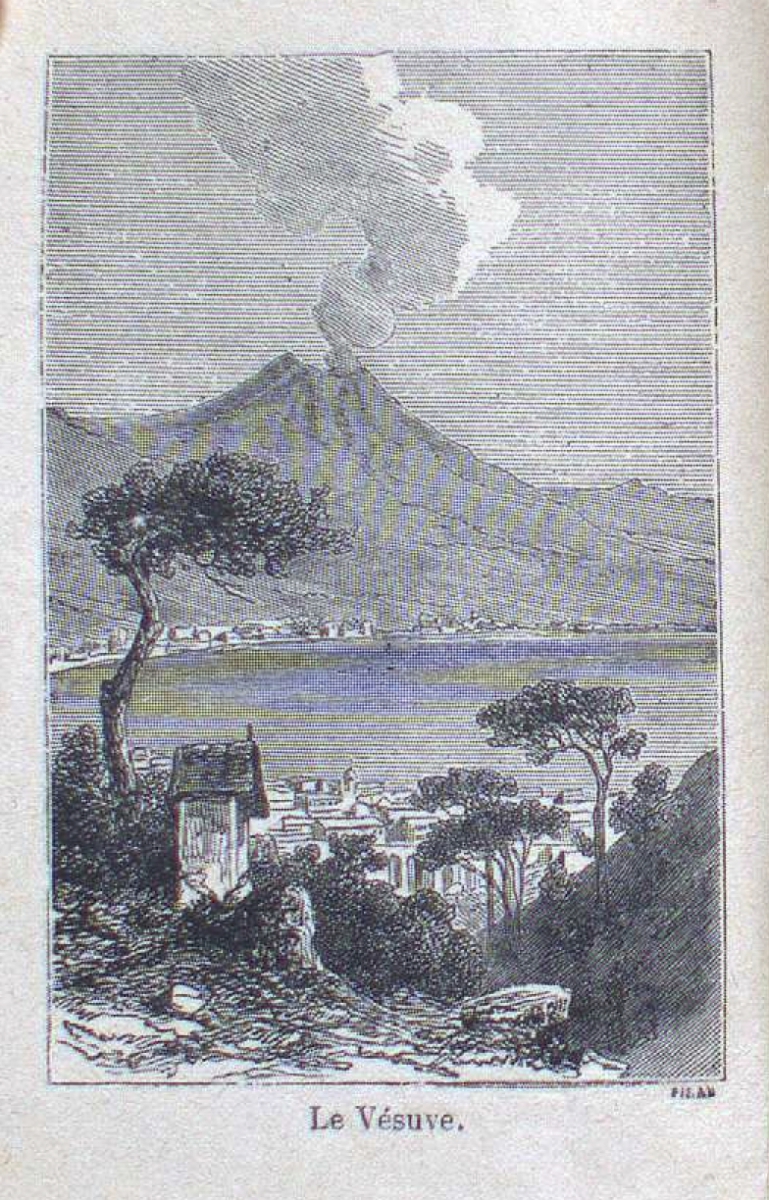
This now-famous event sealed Pompeii away, protecting it from the forces of nature and time, and preserving it for hundreds of years. The unearthing of the city in the 18th century was enormously exciting, and among the most significant archeological discoveries made in Europe.
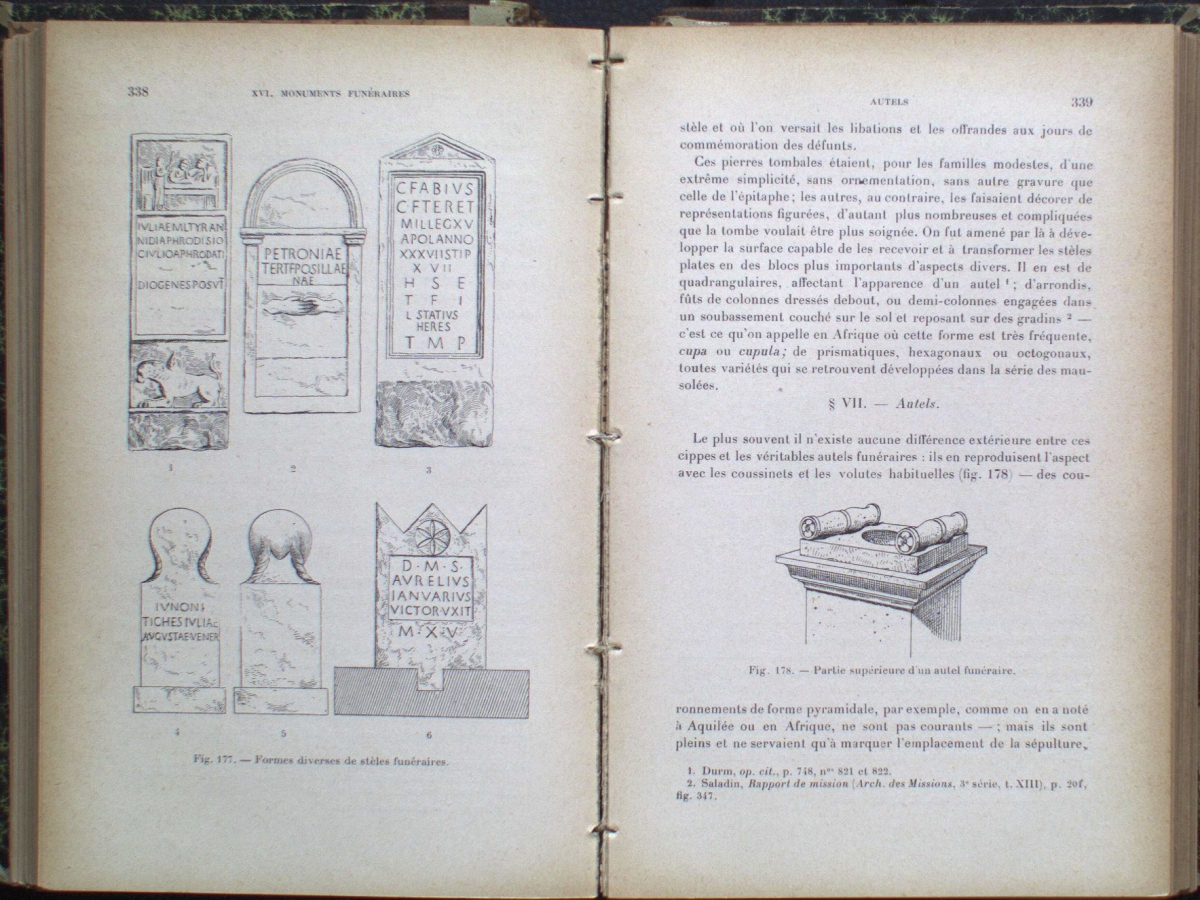
Pompeii was rediscovered in 1748 after nearby Herculaneum was found accidentally during building work on a new palace for King Charles of Naples. The rediscovery of the city came at a time when the interest in the Classical past was high, and excavations were lead by people from Spain, Italy, France and Germany.
Over the course of the 18th and 19th centuries, the city was slowly revealed and mined for information about the lives of the ancient Romans. Records of inscriptions, city plans, and architectural plans were made to send back to scholars all over Europe.
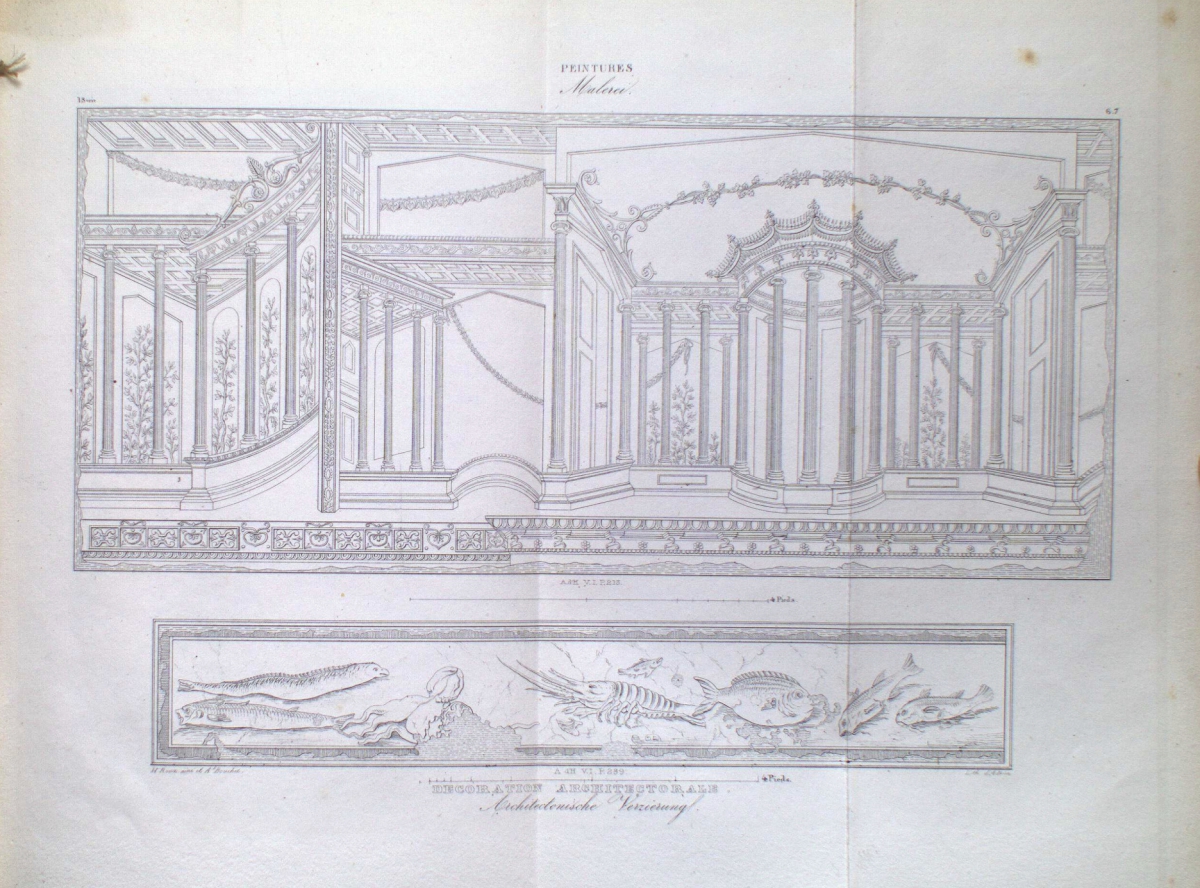
Artists were hired to make drawings of the architecture, mosaics, frescos, and sculptures that were found there, and volumes of illustrated books were published for an interested public to enjoy. These drawings helped popularize the ‘neo-classical’ style in the drawing rooms of the wealthy and fashionable.
In addition to scholars, Pompeii attracted tourists. By the late-18th century it had become an important stop on the Grand Tour. Young men educated in the classics came from all over Europe to see the important monuments of Ancient Rome, including Pompeii.
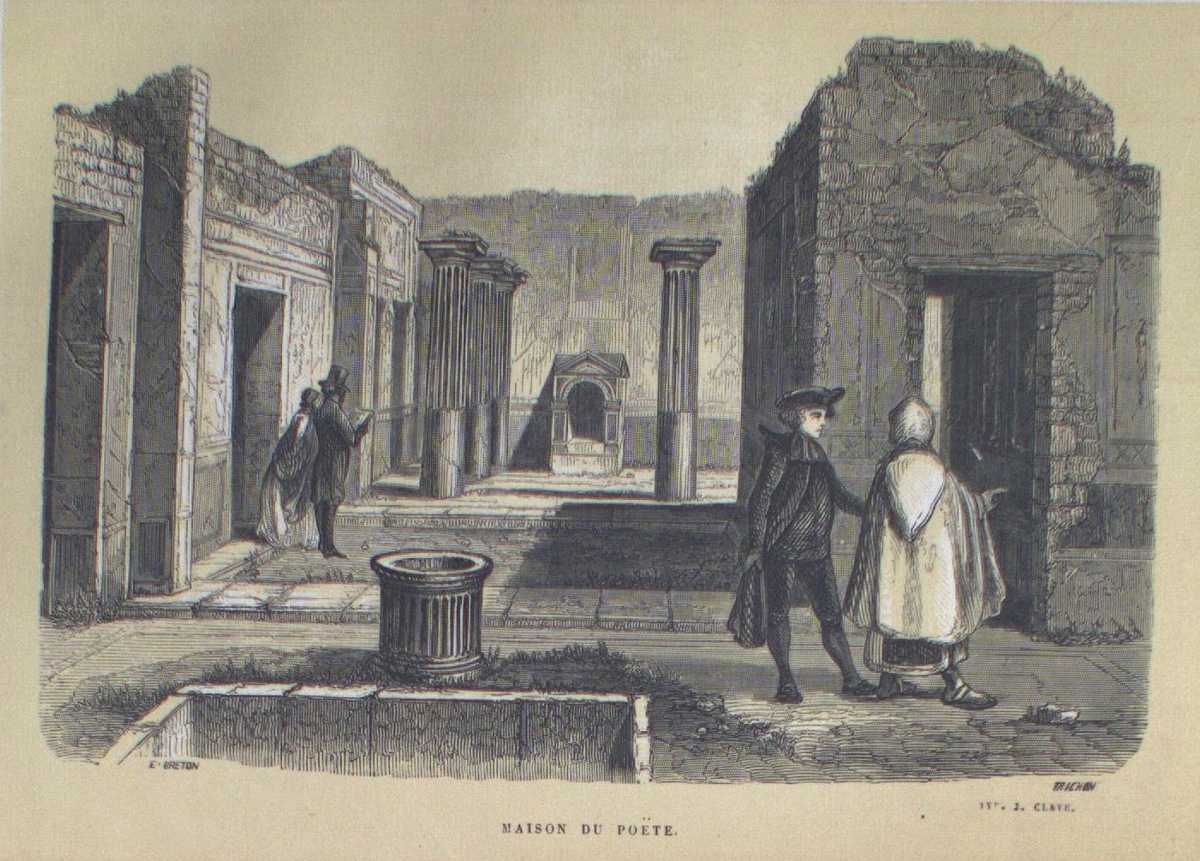
By the 19th century it had become a major site for European sightseers of all kinds. Guidebooks, such as this Handbook for Travellers, Italy from 1903, included maps of the ancient city and descriptions of artifacts at the site.
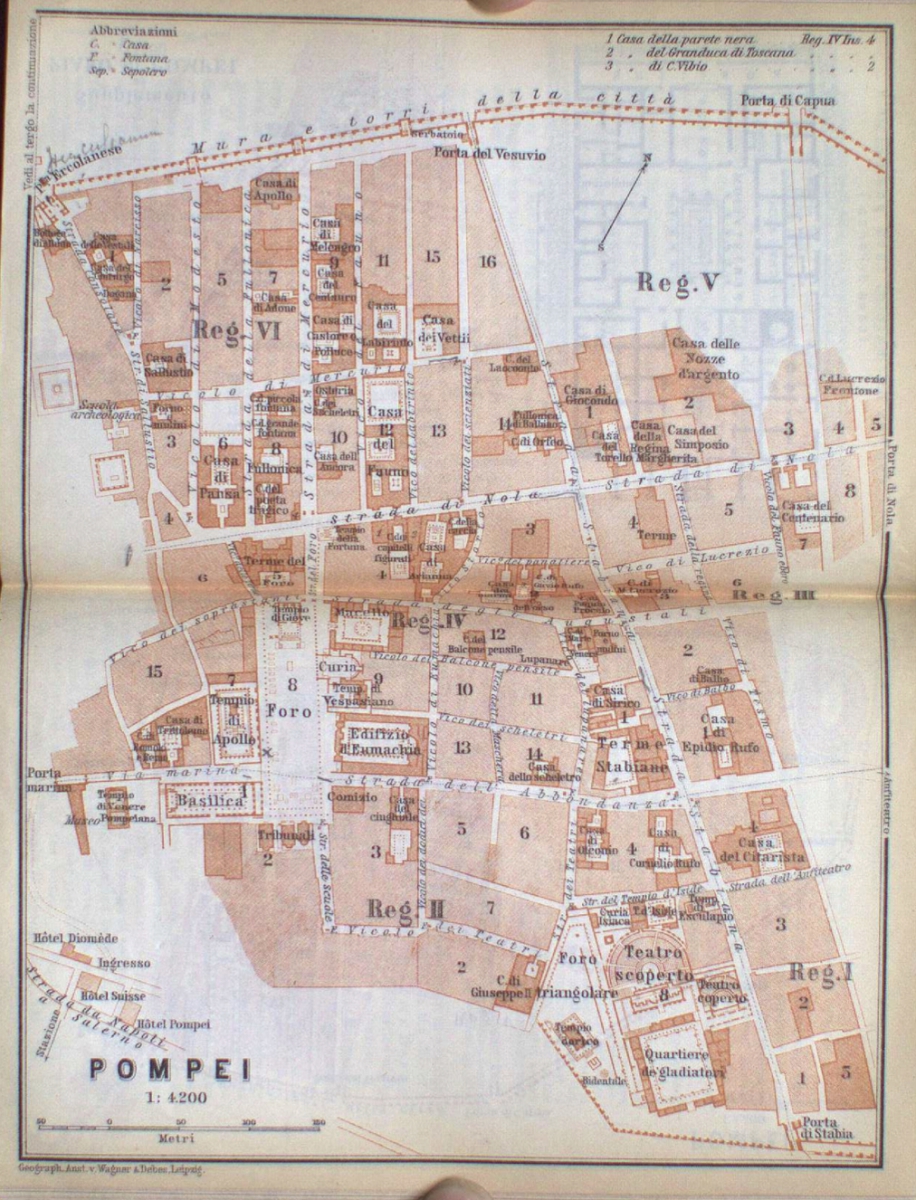
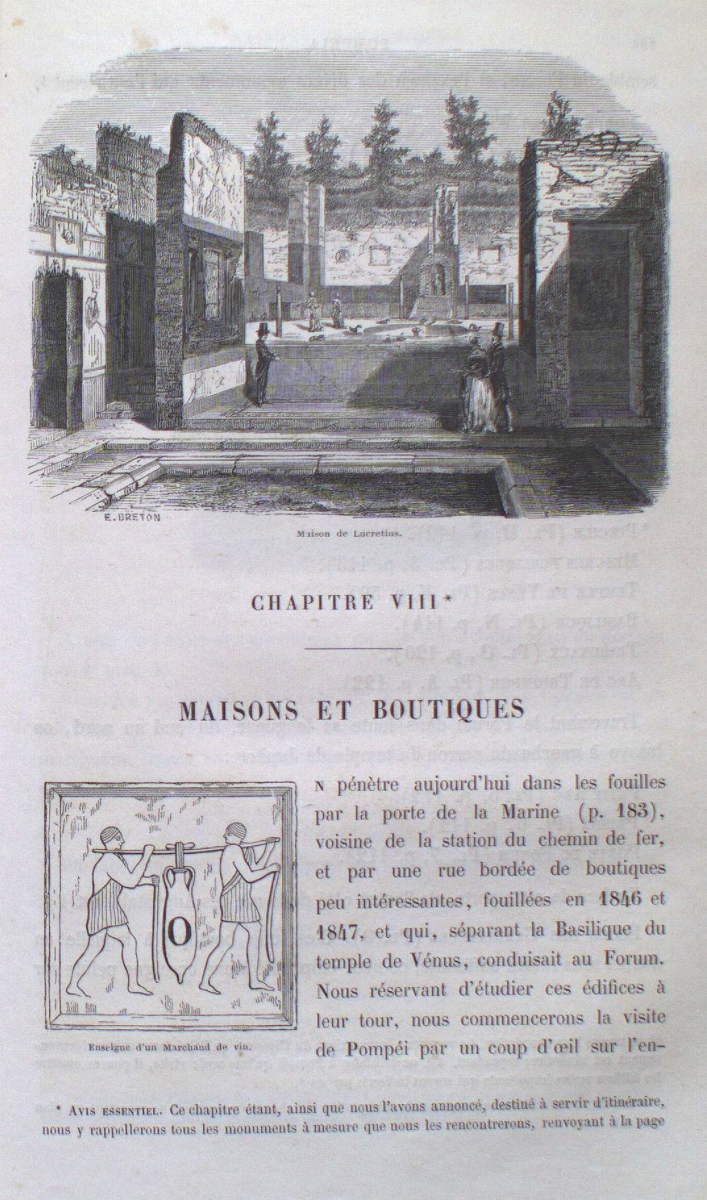
Then as now, people were intrigued by the window Pompeii opened onto the world of ordinary people in an ordinary town. They wanted to know about the ‘maison et boutiques’ of the ancient world: how did they live? where did they shop? what did they buy? Now a World Heritage Site, Pompeii continues to reveal new things about life in the ancient world.

